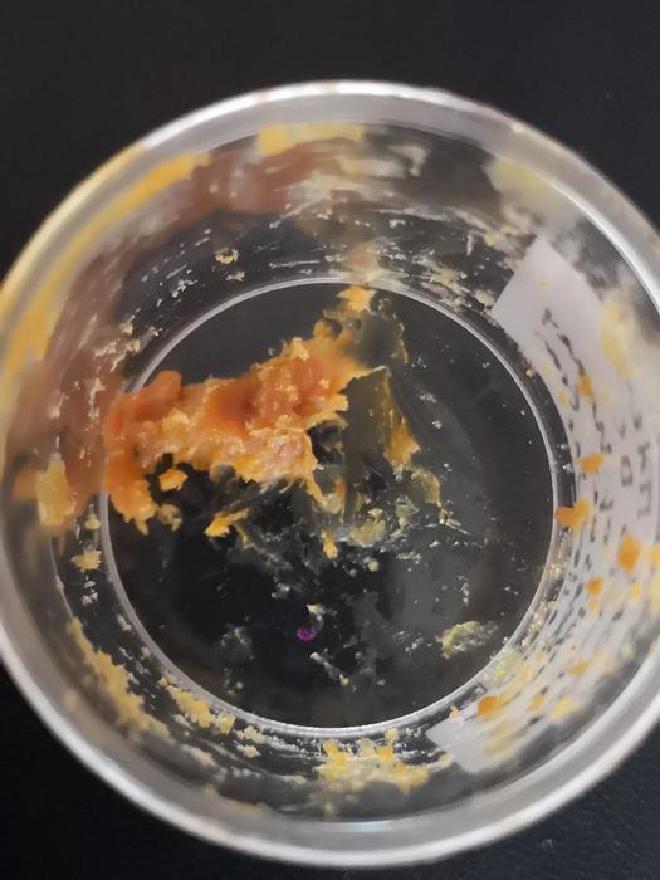

Honey was an important substance in the ancient world, sometimes left in shrines as offerings to the gods or buried alongside the dead. In 1954, one such underground Greek shrine dating to around 520 BCE was discovered in Paestum, Italy — about an hour and a half’s drive from Pompeii. Inside were several bronze jars containing a sticky residue. At the time, archaeologists assumed it was honey, originally offered as honeycombs. Then, three different teams over the course of 30 years analyzed the residue but failed to confirm the presence of honey, instead concluding that the jars contained some sort of animal or vegetable fat contaminated with pollen and insect parts. But when the residue came to the Ashmolean Museum for an exhibition, a team of researchers led by Luciana da Costa Carvalho, James McCullagh had a chance to reexamine the mystery substance and collect new scientific evidence.
The researchers analyzed samples of the residue using several modern analytical techniques to determine its molecular makeup. They found that:
-
The ancient residue had a chemical fingerprint nearly identical to that of modern beeswax and modern honey, with a higher acidity level that was consistent with changes after long-term storage.
-
The residue’s chemical composition was more complex than that of the heat-degraded beeswax, suggesting the presence of honey or other substances.
-
Where the residue had touched the bronze jar, degraded sugar mixed with copper was found.
-
Hexose sugars, a common group of sugars found in honey, were detected in higher concentrations in the ancient residue than in modern beeswax.
-
Royal jelly proteins (known to be secreted by the western honeybee) were also identified in the residue.
“Ancient residues aren’t just traces of what people ate or offered to the gods — they are complex chemical ecosystems,” explained da Costa Carvalho. “Studying them reveals how those substances changed over time, opening the door to future work on ancient microbial activity and its possible applications.”

“This research is a reminder that archaeological collections hold untapped scientific potential and how new information can be revealed when modern analytical techniques and multidisciplinary collaborations are combined” -Luciana da Costa Carvalho-
“The application of multiple analytical techniques was key to the success of this study. By applying several mass spectrometry and spectroscopic approaches we were able to reveal a comprehensive picture of the residue’s molecular composition — enabling us to distinguish between contaminants, degradation products, and original biomarkers.” -Professor James McCullagh, Director of Oxford’s Mass Spectrometry Research Facility in the Department of Chemistry-
“The turning point in the project came with the identification of major royal jelly proteins all specific to honeybee secretions. Our results demonstrate the power of bottom-up proteomics combined with metabolomics in the investigation of archaeological samples.” -Co-author Elisabete Pires-
The study was made possible due to a close partnership between the University of Oxford’s Ashmolean Museum and the Archaeological Park of Pompeii. Dr Kelly Domoney, Heritage Science Manager at the Ashmolean Museum who co-led the study, explained: “In preparation for the exhibition “Last Supper in Pompeii” at the Ashmolean Museum in 2019, our colleagues at the Archaeological Park of Paestum and Veila generously made several important and high-profile loans, including a Greek bronze hydria from the Heroon and its organic contents. We were permitted a unique opportunity to re-analyse those contents using modern instrumentation at the University.”
Ancient kettles for heating water #

Co-author Dr Gabriel Zuchtriegel, Director of the Archaeological Park of Pompeii and former Director of the Archaeological Park of Paestum & Velia, said: “The application of chemical and scientific analyses to extract new and detailed information from existing artefacts allows us to adopt a more informed and nuanced approach to understanding the lives and rituals of past societies, and all from material that already lines the shelves of every archaeological museum collection.”
Citation #
-
The study ‘A Symbol of Immortality: Evidence of Honey in Bronze Jars Found in a Paestum Shrine Dating to 530-510 BCE’ has been published in the Journal of the American Chemical Society. Authors: Luciana da Costa Carvalho, Elisabete Pires, Kelly Domoney, Gabriel Zuchtriegel & James S. O. McCullagh.
-
The article Oxford chemists identify honey offering in a 2,500-year-old shrine was published on Chemistry’s Oxford website
Contact [Notaspampeanas](mailto: notaspampeanas@gmail.com)

